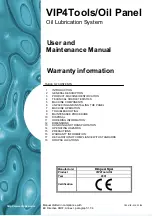
Beta Draft Confidential
2-8
1/19/05
ATM Services Configuration Guide for CBX 3500, CBX 500, GX 550, and B-STDX 9000
About ATM Logical Ports
ATM OPTimum Cell Trunk
ATM OPTimum Cell Trunk
The CBX 3500, CBX 500, GX 550, and B-STDX 9000 ATM OPTimum cell trunk
carries all types of PVC, SVC, and management data. The ATM OPTimum trunk
logical port type provides trunk connectivity between two Lucent switches that are not
directly connected. In this application, some other network elements are separating the
two Lucent switches. These network elements usually consist of ATM switches in
another network. The network provider who manages the other ATM switches
provisions a virtual path connection (VPC) to carry the Lucent trunk traffic. This VPC
supports the trunk and carries all the associated trunk protocol, management data,
PVCs, and SVCs between the two Lucent switches (see
below).
Before you can configure an ATM OPTimum trunk logical port, you must first
configure an ATM UNI or NNI logical port with a minimal amount of bandwidth; this
logical port acts as the feeder port. The feeder port serves the following purposes:
•
Enables interoperability between Lucent and non-Lucent switches by providing a
standard interface type over which a link management protocol can run
•
Controls the valid range of virtual path identifier/virtual channel identifier
(VPI/VCI) values that you can use
Using switch software release 3.0 or greater on the CBX 500 switch, 9.2 or greater for
the CBX 3500 switch, and 1.0 or greater on the GX 550 switch enables VPCs to
traverse OPTimum trunks. This capability depends on the logical port configuration as
well as the configuration of the interfacing network. Prior to this release, VPCs could
not traverse OPTimum trunks.
Configuring the VPI
The VPI is the identifier used for all VCC circuits routed over the OPTimum trunk.
The range of valid VPI and VCI values depends upon the number of valid VPI bits
you set for the ATM UNI feeder port (see
). Enter a number
from 0-nnnn to identify the VP for the ATM logical port; nnnn is equal to 2
P
-1, where
P is the value specified in the Valid Bits in VPI field for the UNI feeder port that
shares this physical port (see the example on
).
For example, if you entered 4 in the Valid Bits in VPI field for the UNI feeder port,
you can have up to 15 virtual paths on this port (2
4
-1=15); if you entered 8 in the Valid
Bits in VPI field, you can have up to 255 virtual paths on this port (2
8
-1=255). The
highest value you can enter (and therefore, the greatest number of VPs you can
configure on the port) depends on the value you entered in the Valid Bits in VPI field
for the ATM UNI feeder port. The OPTimum trunk’s VPI must be unique
to the port.
Summary of Contents for CBX 3500
Page 888: ......
















































